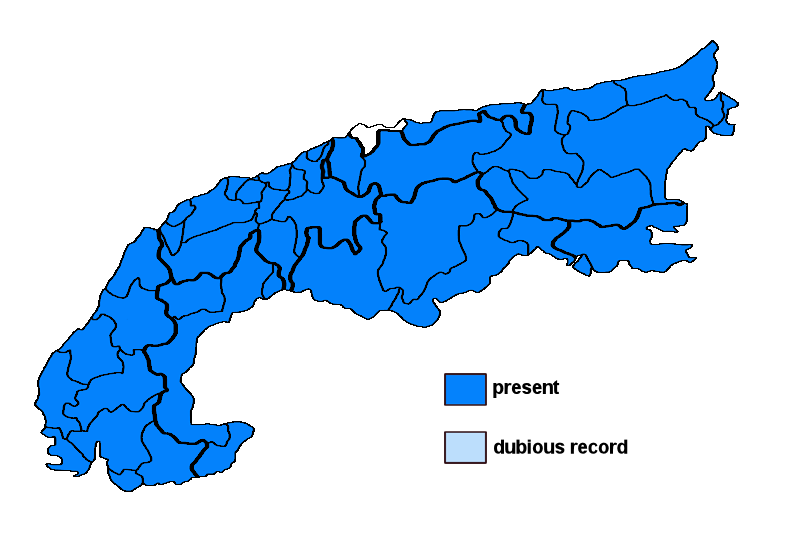Melanelixia glabratula (Lamy) Sandler & Arup
Syn.: Melanelia fuliginosa (Fr. ex Duby) Essl. subsp. glabratula (Lamy) Coppins, Melanelia glabratula (Lamy) Essl., Parmelia fuliginosa (Fr. ex Duby) Nyl. subsp. glabratula Lamy, Parmelia fuliginosa (Fr. ex Duby) Nyl. var. laetevirens (Flot. ex Körb.) Nyl., Parmelia glabratula (Lamy) Nyl., Parmelia laetevirens (Flot. ex Körb.) F. Rosend.
Lichenised.
Substrate: bark, siliceous rocks, intermediate rocks (such as calciferous schists), lignum
Altitudinal range: from the mesomediterranean belt (potential vegetation: evergreen broad-leaved forests dominated by Quercus ilex) to the subalpine belt (potential vegetation: open, taiga-like forests dominated by Larix decidua and/or Pinus cembra and Rhododendron)
Note: a mainly temperate, ecologically wide-ranging species occurring both on wayside trees and in open forests (e.g. on Fagus). The greatest majority of the epiphytic records of M. fuliginosa refer to this species; widespread throughout the Alps.
Austria: Vorarlberg; Tirol; Salzburg; Kärnten; Steiermark; Oberösterreich; Niederösterreich (incl. Wien); Burgenland; Germany: Oberbayern; Switzerland: Appenzell; Bern; Fribourg; Glarus; Graubünden; Luzern; St. Gallen; Schwyz; Ticino; Uri; Unterwalden; Vaud; Valais; France: Alpes-de-Haute-Provence; Haute-Alpes; Alpes-Maritimes; Drôme; Isère; Savoie; Haute-Savoie; Vaucluse; Var; Italy: Friuli; Veneto; Trentino Alto Adige; Lombardia; Piemonte; Valle d'Aosta; Liguria; Slovenia: Alpine and Pre-Alpine Slovenia; Trnovsky Gozd; Liechtenstein





